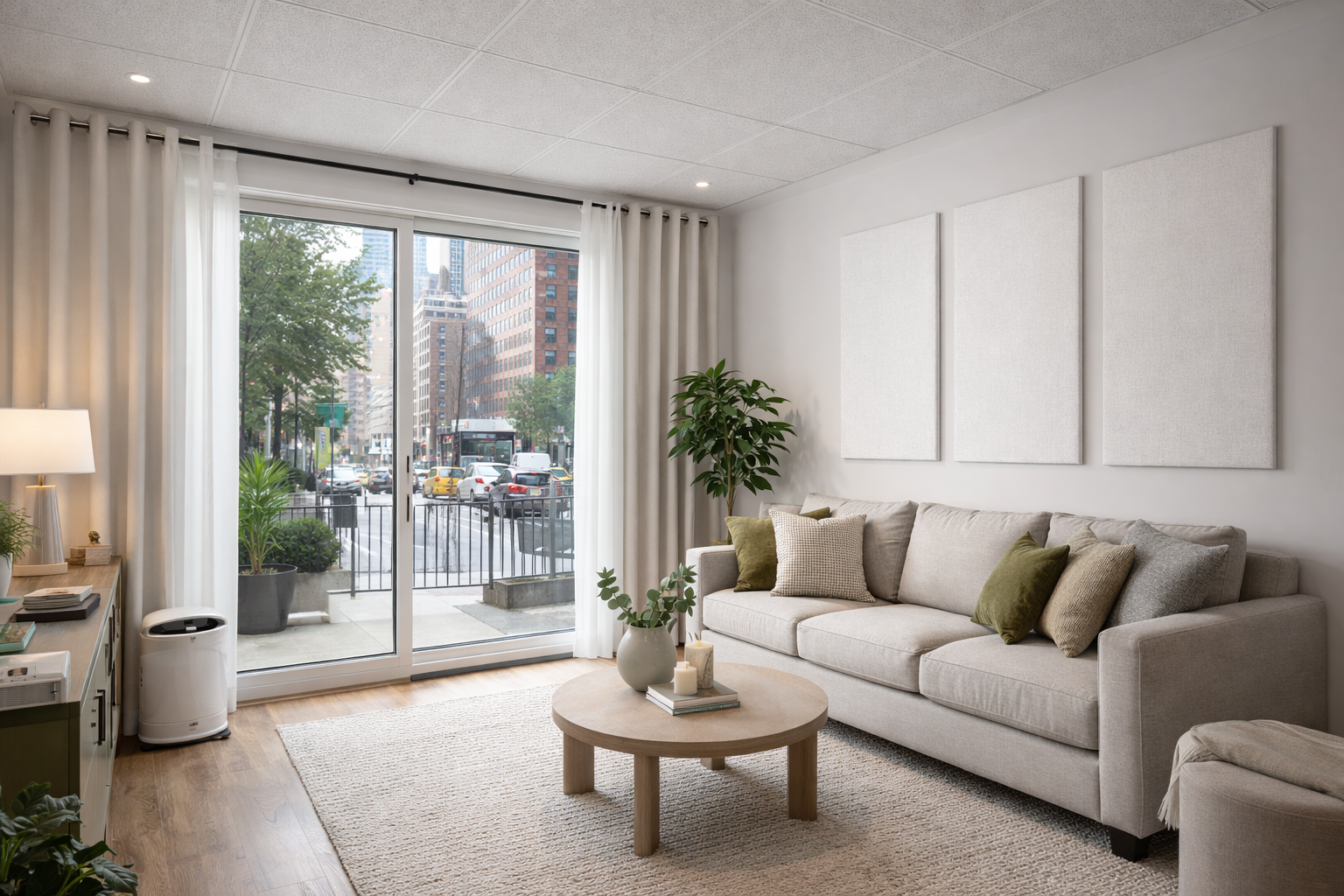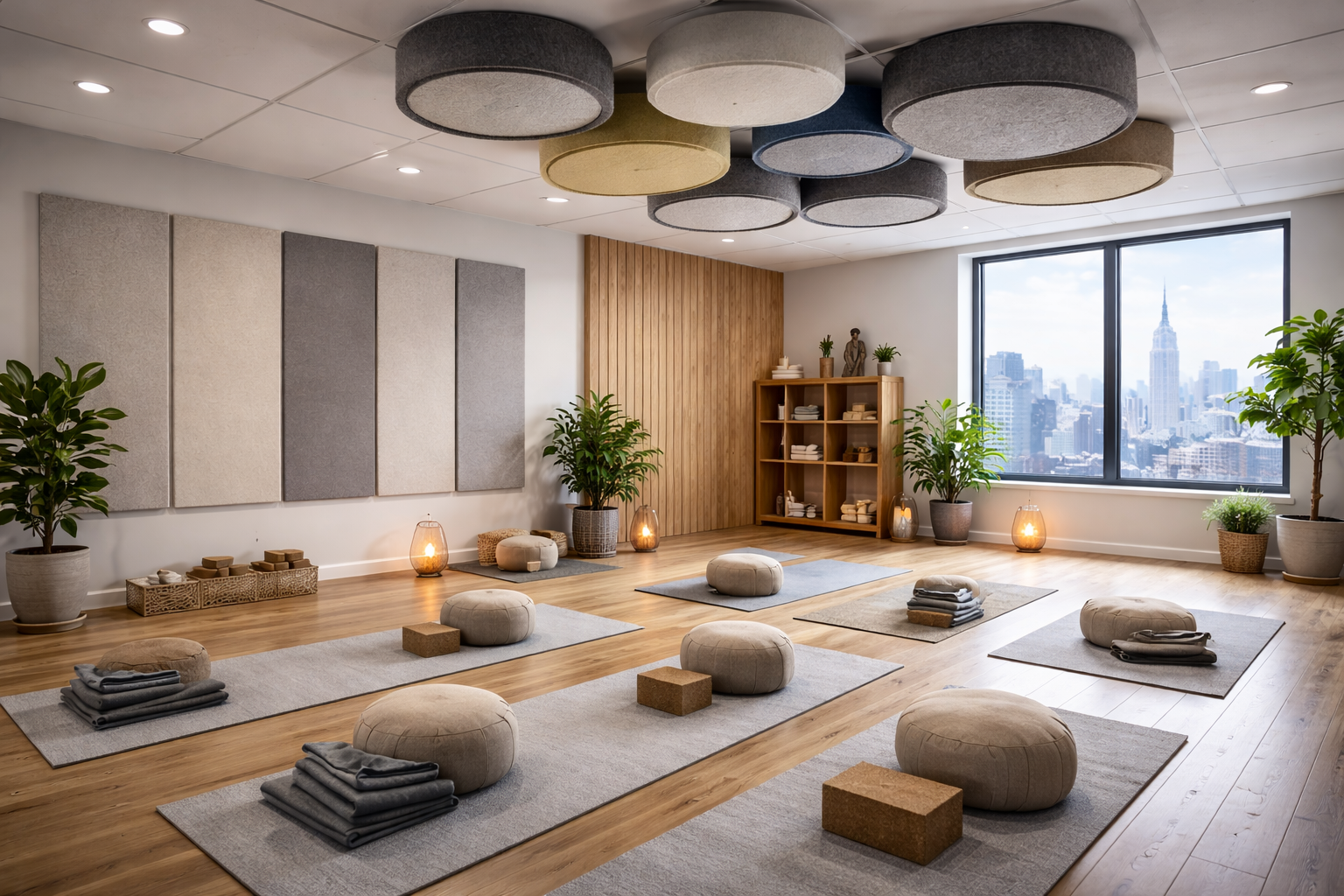Sound quality matters. Whether you're recording music, leading Zoom calls, or trying to sleep through noisy neighbors, acoustics shape your experience. But when it's time to upgrade your space, one big question always comes up: acoustic foam vs panels—which one actually works better?
The answer isn't one-size-fits-all. It depends on your goals, your space, and how sound behaves inside it. In this guide, we'll break down the facts, clear up the confusion, and help you choose the right acoustic treatment.
Understanding the Fundamental Differences Between Acoustic Materials
To treat sound properly, you need to understand what you're dealing with. The terms "soundproofing" and "acoustic treatment" are often used interchangeably, but they mean different things. And the materials you choose—whether foam or panels—serve very different purposes.
Let's start by comparing what makes these materials function, and where each excels or falls short.
What Makes Acoustic Foam Unique
Acoustic foam is lightweight, soft, and typically made from polyurethane or melamine. You'll often see it in a wedge or pyramid pattern. These shapes aren't just for looks—they help diffuse sound waves and reduce reflections.
The main job of acoustic foam is to absorb mid to high frequencies. It's especially good at taming echo and flutter in small rooms. That's why foam is so common in home studios and podcast booths. It's affordable, easy to install, and available in tons of shapes and colors.
But it's not magic. While foam helps improve clarity, it doesn't block sound from leaving or entering a room.
How Acoustic Panels Differ from Traditional Foam
Now let's look at acoustic panels. At first glance, they may seem similar—they're both mounted on walls and ceilings. But acoustic panels are usually built around a rigid frame, filled with dense mineral wool or fiberglass, and wrapped in acoustically transparent fabric.
That construction gives panels a serious edge. They absorb a broader range of frequencies, including low-end bass. Plus, panels often look more refined and can be custom-designed to match any aesthetic. For high-end office spaces, music studios, and homes where design matters, panels are the go-to.
That leads to a frequent comparison: acoustic panels vs foam. Foam is great for quick fixes and tight budgets. Panels are better for balanced, high-performance sound control.
The Science Behind Sound Absorption vs Sound Blocking
Here's where a lot of people get tripped up: absorbing sound isn't the same as blocking it.
Acoustic foam and panels both absorb sound. They reduce echo, improve speech clarity, and make a room feel more comfortable acoustically. This is called acoustic treatment.
Soundproofing, on the other hand, means blocking sound—keeping it from passing through walls, ceilings, doors, and floors. That requires mass, airtight seals, and often structural changes.
If your goal is to stop noise from entering or escaping a room, acoustic treatment alone won't cut it. This distinction becomes important when comparing acoustic panels vs soundproofing—we'll break that down more later.
Do Acoustic Foam Panels Work for Different Applications
You've probably seen foam panels slapped all over YouTube backdrops and gamer setups. But do they work? Yes—and no.
Testing Results from Professional Installations
When installed properly, acoustic foam can reduce echo, improve vocal clarity, and tighten up room tone. Our team at New York Soundproofing has used foam in countless projects—from home podcast setups to vocal booths.
In test environments, foam panels have proven effective at absorbing frequencies above 500 Hz. That includes most human speech and many instruments. But don't expect miracles: foam won't fix bad acoustics on its own, and it won't absorb bass effectively.
When we test a room, we look at reverberation time, frequency decay, and speech intelligibility. Foam can help—but it's just one piece of the puzzle.
Common Misconceptions About Foam Effectiveness
One of the biggest myths is that foam panels are a soundproofing solution. They're not. You can line every wall with foam and still hear your neighbor's TV through the drywall.
Another misconception is that foam improves audio quality just by being present. Placement, thickness, and coverage area all matter. If the foam is too thin or installed only on one wall, it might absorb very little.
People also confuse diffusion with absorption. Foam doesn't scatter sound evenly—it absorbs it. If you want diffusion, you need special panels designed for that purpose.
So, do acoustic foam panels work? Yes—but only if you use them right, and for the right reasons.
When Foam Falls Short of Expectations
Foam tends to disappoint in three scenarios:
- Trying to block noise – It won't.
- Rooms with bass issues – Foam doesn't absorb low frequencies well.
- Large, open spaces – You need more robust materials to make an impact.
In these cases, a combination of acoustic panels, bass traps, and architectural adjustments works better.
This is why clients often turn to us after trying foam first. It's a useful tool—but it's not a complete solution.
Acoustic Panels vs Soundproofing – Setting Realistic Expectations
Let's clear the air: acoustic panels and soundproofing are not the same thing. Not even close. Yet the confusion persists—and expectations suffer.
Treatment vs True Soundproofing Explained
Acoustic treatment changes how sound behaves inside a room. Soundproofing prevents sound from leaving or entering a room. These are different goals that require different methods.
If you're dealing with echo, poor vocal clarity, or reverb, treatment is what you need. If you're tired of hearing footsteps upstairs or sirens outside, you need soundproofing.
Panels are excellent for treatment. They help refine your space. But they won't stop noise from your neighbors—or from you reaching them.
This distinction becomes critical in conversations around acoustic panels vs soundproofing. It's not about which one is better—it's about which one solves your problem.
Noise Reduction Coefficients and What They Mean
Every acoustic product has a Noise Reduction Coefficient (NRC) rating. This number tells you how much sound the material absorbs across a range of frequencies.
Foam typically has an NRC between 0.3 and 0.6, depending on thickness and density. Panels filled with mineral wool can hit 0.8 or higher, especially if spaced from the wall.
Keep in mind: NRC doesn't measure how much sound gets blocked. That's measured in STC (Sound Transmission Class)—a separate metric used in actual soundproofing.
So, when shopping for solutions, pay attention to which number you're looking at. NRC tells you how "dead" a room will feel. STC tells you how much sound stays in or out.
Managing Client Expectations
By the current year, more people are working from home, recording content, or simply seeking peace. That's made acoustics a priority—but also created confusion.
At New York Soundproofing, we've seen a surge in clients who tried a quick-fix foam solution, only to be disappointed. That's why our first step is always consultation. We want to understand the problem before recommending a product.
With AI voice assistants, hybrid offices, and content creation on the rise, the need for both sound control and sound isolation is growing. Helping clients understand the difference is the first step toward lasting results.
Performance Comparison in Different Environments
No two rooms behave the same. That's why choosing between acoustic foam and panels depends heavily on where and how you plan to use them. Let's break it down by setting.
Home Studios and Recording Spaces
Home studios are where foam gets the most love—and often the most confusion.
If you're recording vocals or mixing audio in a small space, acoustic foam helps reduce early reflections and slapback echo. It's easy to install and has a relatively low cost. But if your room has bass buildup or boxy low mids, foam won't be enough.
That's where panels shine. Strategically placed acoustic panels can control the full frequency range, especially when combined with bass traps in the corners. This creates a tighter, more balanced mix environment.
So when comparing acoustic panels vs foam in a recording setup, foam is a starting point. Panels complete the picture. The most effective studios use a combination of both—plus diffusion when needed.
Office Environments and Conference Rooms
Modern offices are designed to look sleek—but they often sound terrible. Glass walls, concrete floors, and open layouts reflect sound like crazy. The result? Echoes, distractions, and frustrated teams.
In these spaces, aesthetics matter as much as acoustics. Acoustic panels offer clean, professional finishes with high absorption performance. Panels can double as art, blend into branding, or act as design features. Foam, in contrast, often looks out of place in professional settings.
When clients ask us for solutions in offices, we rarely recommend foam. It's not durable enough, and it doesn't provide the low-frequency absorption needed to reduce room boom and HVAC rumble.
For added control in busy open offices, we also install sound masking systems for open offices that create a consistent ambient noise layer—improving privacy and reducing distractions.
Residential Applications and Noise Control
In homes, the line between comfort and control is thin. Whether you're dealing with loud neighbors or trying to quiet your kid's gaming setup, you need a solution that works—and doesn't wreck the vibe.
Here's where foam often gets overused. People stick it on bedroom walls, thinking it will block noise. It won't.
If your concern is room echo, TV clarity, or noisy kitchens, panels will do a much better job. They're more effective across a wider frequency range, and they blend into the home better than black foam tiles.
That said, not all residential projects need full-scale soundproofing. Often, treating a few key surfaces with panels makes a noticeable improvement in comfort and clarity. When noise intrusion is serious—like loud plumbing or street noise—then we bring in isolation layers, seals, and construction-based solutions.
We guide clients to set clear goals: are you improving room acoustics, or trying to keep sound in/out? That clarity prevents disappointment.
Making the Right Choice for Your Specific Needs
Choosing between foam and panels isn't about which is better. It's about what you need.
Here's a quick summary to guide your decision:
|
Goal |
Best Option |
|
Reduce echo or reverb in a small space |
Acoustic Foam |
|
Improve clarity and speech intelligibility |
Acoustic Panels |
|
Address bass buildup and low-frequency issues |
Acoustic Panels + Bass Traps |
|
Match high-end interior design |
Custom Acoustic Panels |
|
Block noise between rooms or from outside |
Soundproofing (not foam or panels alone) |
|
Temporary, budget-friendly treatment |
Foam (with smart placement) |
Remember, the most important step in any project is understanding the problem. Before you mount anything to your wall, ask: Am I treating sound inside the room, or trying to keep sound in or out?
At New York Soundproofing, we help clients every day who tried the DIY route first. We don't blame them—online advice makes everything look easy. But real results come from experience, measurement, and smart materials.
So whether you're building a home studio, quieting a chaotic office, or transforming your living room into a peaceful retreat, the right acoustic solution is out there.
If you're still unsure, talk to us. We'll guide you through every option—no guesswork, no gimmicks, just results that sound as good as they look.
.png)


